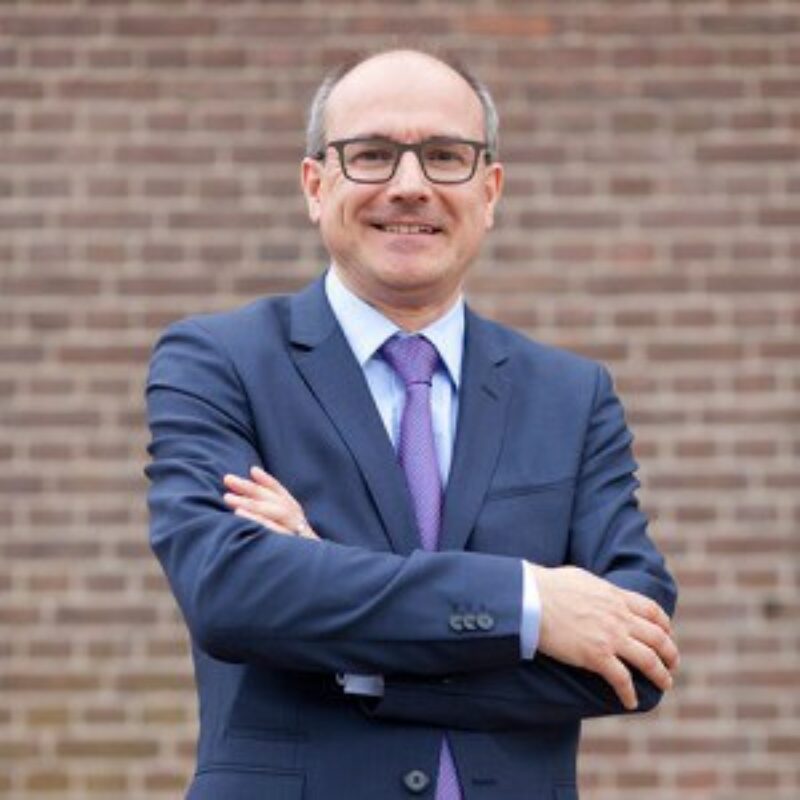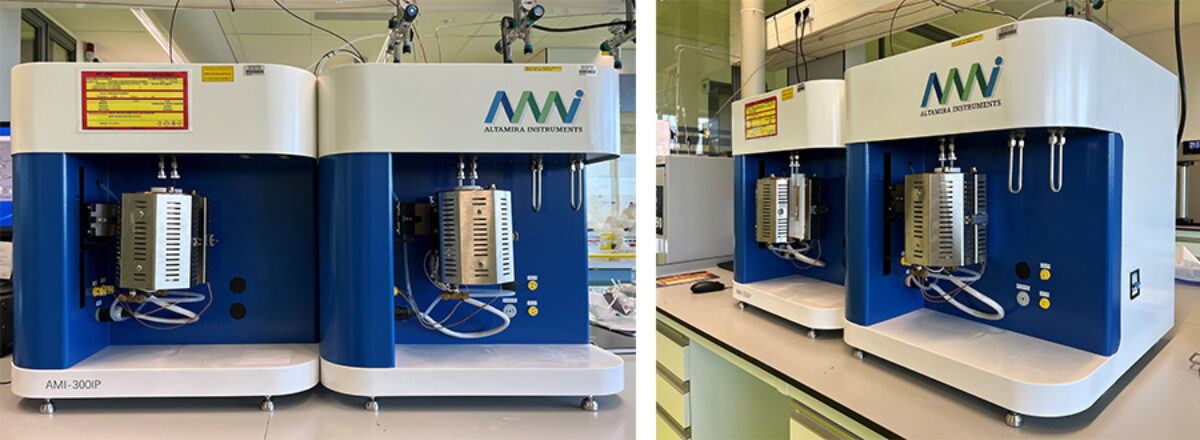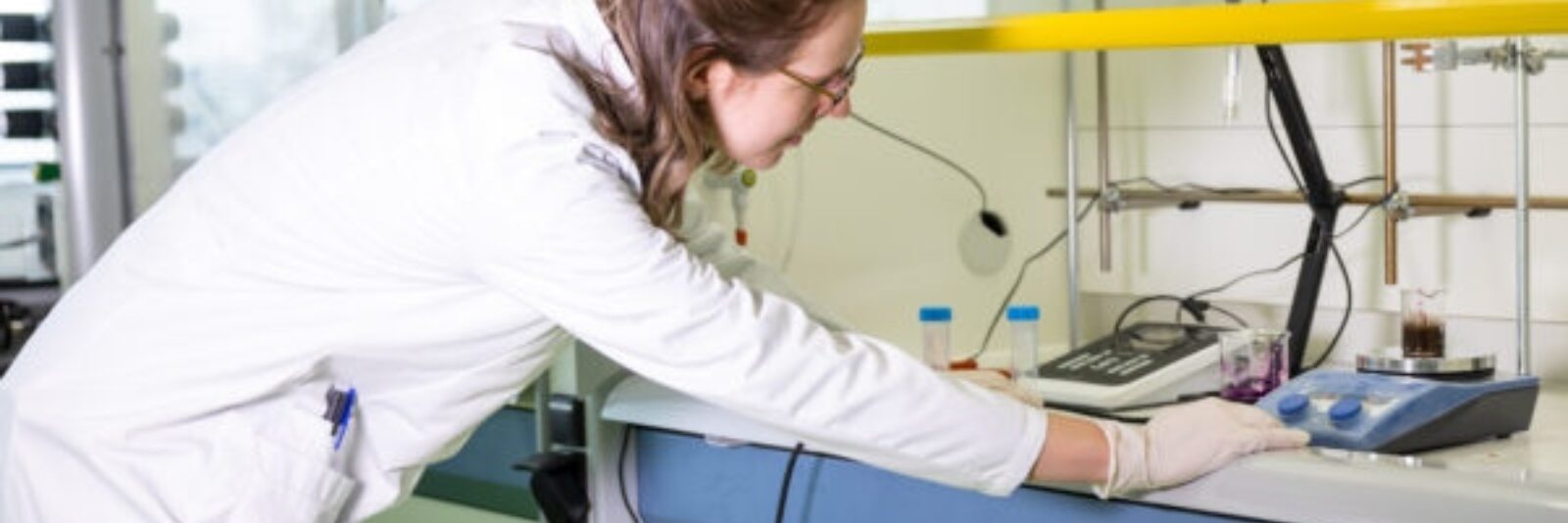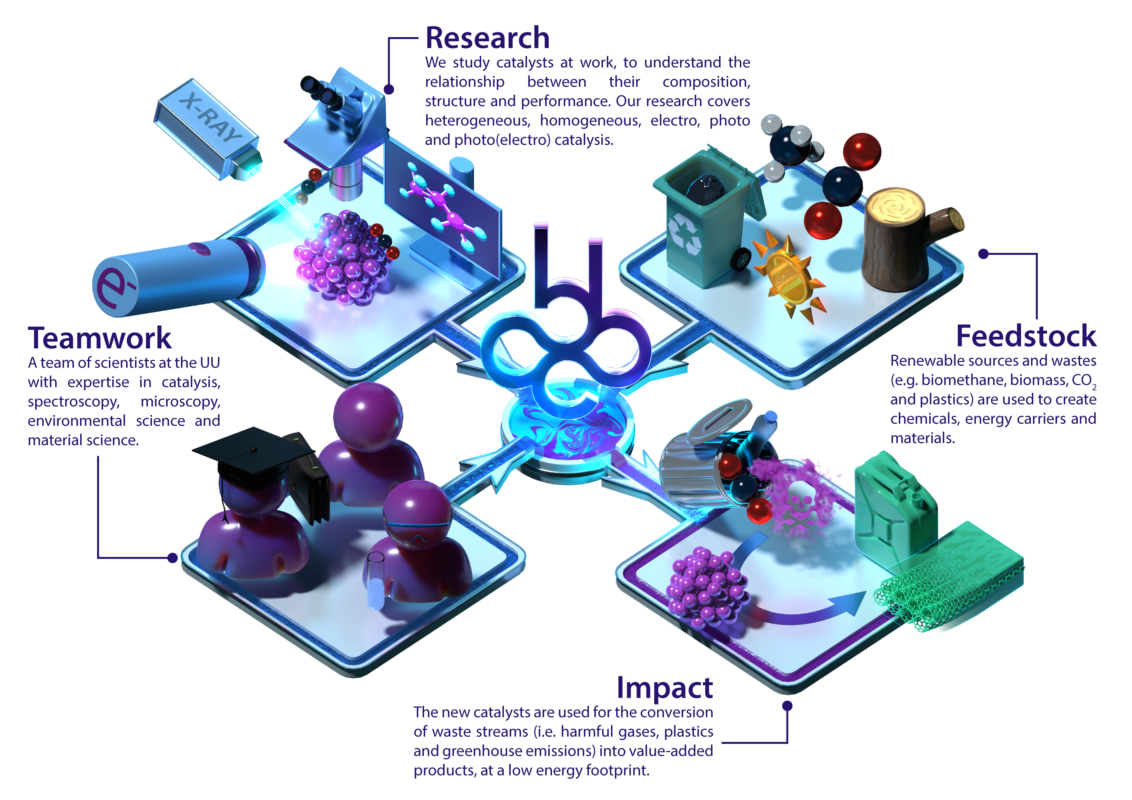The focus of the Utrecht University hub is on the fundamental understanding of heterogeneous catalysts, to develop new chemical technologies for the conversion of waste streams, such as greenhouse gases, biomass and plastics, using renewable energy sources such as sunlight. This is enabled by a combination of expertise in catalysis, chemistry, materials science, and environmental science, and aided by spectroscopy and microscopy
ARC CBBC Utrecht hub: Understanding catalysis to create a more sustainable society
At the ARC CBBC Utrecht hub, new catalysts, often comprised of metals, metal oxides and metal carbides as well as porous materials, such as zeolites and metal-organic frameworks, are being developed for performing challenging chemical transformations, such as the activation of CO2 and (bio)methane, into value-added products and the conversion of municipal and agricultural waste. Attention of the latter theme involves chemical recycling of plastic waste and the valorization of recalcitrant biomolecules, such as lignin, chitin, and humin. One of the strongholds of the research conducted at the ARC CBBC Utrecht hub is the development and use of in-situ and operando spectroscopy and microscopy methods for investigating the reaction and deactivation mechanisms of catalytic reactions under realistic conditions. The analytical methods available cover different length and timescales enabling to study catalysis from the reactor and catalyst particle level down to the level of single atoms and molecules.
The lines of research at the ARC CBBC Utrecht hub are:
Design and understanding of solid catalysts: gaining fundamental understanding in the relationship between catalyst composition, structure and performance is an essential step in the development of new catalytic technologies especially for challenging chemical conversions, such as the activation of small molecules (e.g., CO2 and CH4) as well as large molecules (plastic waste and recalcitrant biomolecules).
Activation of small molecules: The combination of powerful analytical methods, including both spectroscopy and microscopy, will yield fundamental knowledge in the activation of small molecules, such as CO2 and CH4.
Chemical recycling of plastic waste: New catalytic methods for the depolymerization of polymers, such as polyethylene and polypropylene, are being developed using thermo-, mechano-, and photochemistry for the recovery of polymer building blocks and hydrocarbon feedstock.
Valorizing biomass waste from land and sea: Agricultural activities and fishery leads to the production of waste products, which can be used as chemical building blocks to make our goods. Examples of such biomolecules are lignin, chitin, and humin. Catalytic valorization may open up roads to the use of these recalcitrant molecules to make for example coatings.
Photoconversion materials: developing materials that convert light into other useful forms of energy, such as heat, electricity, or chemical energy. Spectroscopic techniques are developed to gain fundamental insights in these light-driven processes. An emerging topic is to develop photocatalytic materials for indoor air cleaning applications.
A word from professor Bert Weckhuysen, program director at the ARC CBBC Utrecht hub:
“ARC CBBC is a unique organization where academic and industry meet to push forward sustainable and circular chemistry”

Infrastructure ARC-CBBC labs Utrecht University
The hub infrastructure includes state of the art devices for characterization of solids and catalysts, as well as operando (catalytic) reaction testing.
In short the following 4 large equipment are available at ARC-CBBC Utrecht Hub:
- Catalytic test set-ups with Operando IR, Raman spectroscopy, UV/VIS spectroscopy, GC: Multi-purpose test set-up for chemicals synthesis with operando IR and Raman spectroscopy and product tracking using GC, specifically modified for dangerous gasses (build in fume hood)
- Multi-purpose test set-up for small molecule activation with operando laser-induced fluorescence and UV/VIS spectroscopy, and product tracking using GC
- X-ray diffraction (XRD): Characterization of thin films, coatings and other flat samples (XRD, GI-XRD, and in-situ high temperature reaction chamber for XRD)
- Temperature programmed reduction/desorption (TPR/TPD)
ARC CBBC researchers are given the opportunity to use this large equipment. For information please contact Matteo Monai (assistant professor) or Ramon Oord (lab technician).
1. Multi-purpose test set-up for chemicals synthesis with operando IR and Raman spectroscopy and product tracking using GC, specifically modified for dangerous gasses (build in fume hood)
2. Multi-purpose test set-up for small molecule activation with operando laser-induced fluorescence and UV/VIS spectroscopy, and product tracking using GC
3. Characterization of thin films, coatings and other flat samples (XRD, GI-XRD, and in-situ high temperature reaction chamber for XRD)

4. Temperature programmed reduction/desorption (TPR/TPD)

